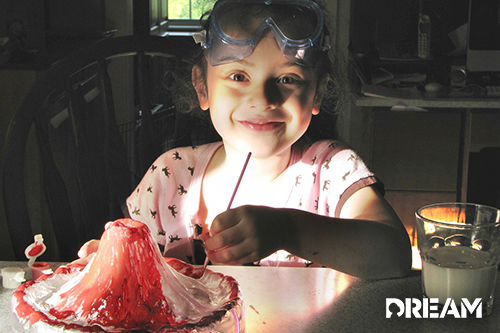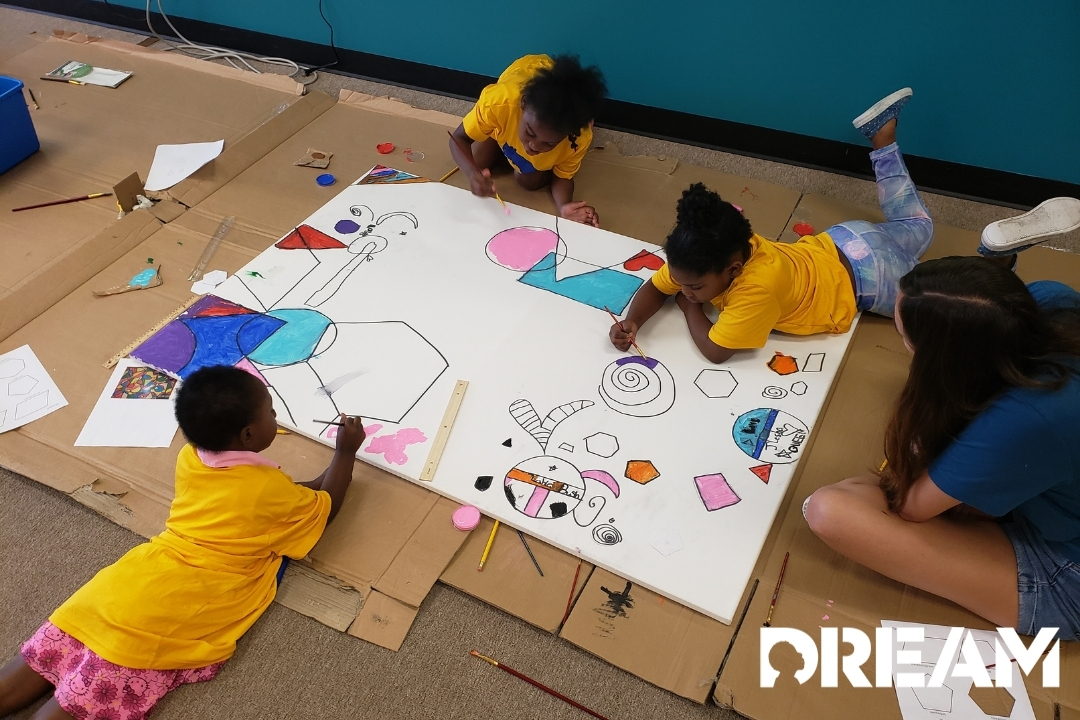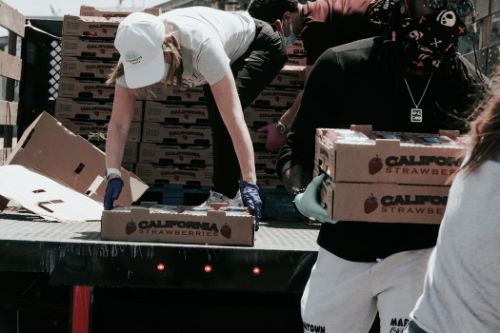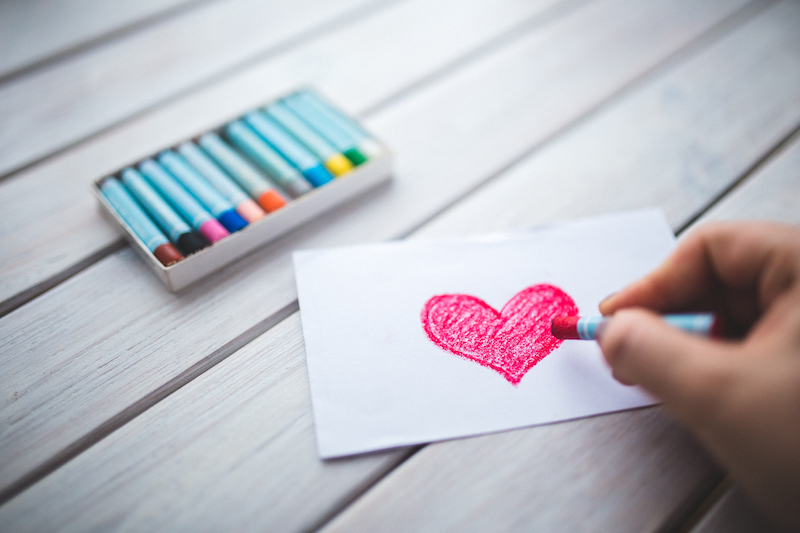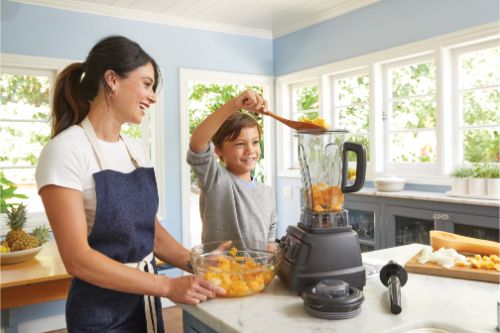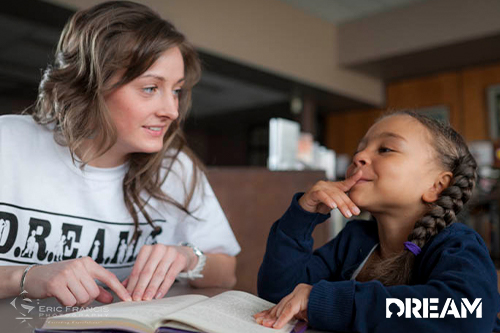After school programs, get ready to add a little flash, bang and boom to your after school lineup. Doing some simple science experiments at your home or in your classroom is the easiest way to teach kids to be problem solvers and critical thinkers. It will foster curiosity about the world around them too.
These skills empower kids to be confident in their ability to handle life’s challenges which is a life skill that cannot be overlooked. Plus they are a ton of fun for after school programs to do and a great way to make memories.
Ready for a taste bud explosion? When acids and bases mix, you get some exciting chemistry! Oranges and other citrus fruits are filled with citric acid. It is a safe acid, and it’s what gives oranges, lemons, and limes their sourness.
Baking soda is a base, the opposite of an acid. It’s also safe, but doesn’t taste very good on it’s own, and will give you a tummy ache if you eat a lot of it. As the citric acid and baking soda mix, it makes millions of carbon dioxide bubbles, the same gas you breathe out, and the same one that makes soda so fizzy.
All you need is an orange or a clementine and ½ a teaspoon of baking soda.
Instructions:
- Cut the oranges into slices or peel separate into sections.
- Dip a slice or section into the baking soda.
- Take a bite! As you chew, it should start to bubble in your mouth.
HERE COMES THE BOOM! A chemical reaction between vinegar and baking soda creates a gas called carbon dioxide. Carbon dioxide is the same type of gas used to make the carbonation in sodas. What happens if you shake up a soda? The gas gets very excited and tries to spread out. There is not enough room in the bottle for the gas to spread out so it leaves through the opening very quickly, causing an eruption!
Materials
- 10 ml of dish soap
- 100 ml of cold water
- 400 ml of white vinegar
- Food coloring
- Baking soda slurry (fill a cup about ½ with baking soda, then fill the rest of the way with water)
- Empty 2 liter soda bottle
Instructions
***This should be done outside due to the mess***
- Combine your vinegar, water, dish soap and two drops of food coloring into the empty soda bottle.
- Use a spoon to mix the baking soda slurry until it is all a liquid.
- Eruption time! Pour the baking soda slurry into the soda bottle quickly and step back.
Make It Rain
Okay so our first two experiments were a little messy. This next experiment is perfect for your after school program! What happens? The cold plate causes the moisture in the warm air, which is inside the jar to condense and form water droplets.
This is the same thing that happens in the atmosphere. Warm, moist air rises and meets colder air high in the atmosphere. The water vapor condenses and forms precipitation that falls to the ground.
Materials
- Glass canning jar
- Ceramic plate
- Hot water (supervision is needed for this part)
- 4 ice cubes
Instructions
- Pour two inches of the hot water into the canning jar.
- Cover the jar with the ceramic plate face up.
- Wait three minutes to continue to the next step.
- Put ice cubes on the plate.
- Observe your homemade water cycle.
Time for a tasty after school program treat, and who doesn’t love some rock candy!? Well… maybe your dentist. Oh well! So how does it work?
When you mixed the water and sugar you made a supersaturated solution. This means that the water could only hold the sugar if both were very hot. As the water cools the sugar “comes out” of the solution back into sugar crystals on your string. The string and paper clip act as a “seed” that they start to grow on. With some luck and patience you will have a tasty scientific treat! Enjoy!
Materials
- Piece of string, about 6 inches long. Kite string works best.
- A pencil or popsicle stick.
- A paper clip
- 1 cup of water
- 2 cups of sugar
- A glass jar. Mason jars work best.
Instructions
- Tie one end of the string to the middle of the popsicle stick or pencil.
- Tie the other end around bead or paper clip.
- Next, lay the popsicle stick or pencil across the top of a jar so that the string hangs down the middle of the jar. You want to make sure that it is not touching the bottom of the jar, but you do want it close. Also make sure that it is not touching the sides of the jar either. If it hangs down too far, just roll the string around the pencil a few times to shorten the string. The string will act as a seed for the crystal. Now that the string and pencil are ready remove them from the jar and set them aside.
- This next part requires hot water so please get an adult’s help.
- Pour the water into a pan and bring it to boil.
- Add 1/4 cup of sugar to the boiling water, stir it until it dissolves.
- Repeat this step until all of the sugar has been dissolved. This will take time and patience and it will take longer for the sugar to dissolve each time. Be sure you don’t give up too soon. You are making a “supersaturated solution!”
- Have your adult helper carefully pour the hot sugar solution into the jar and fill it almost all the way to the top. Go ahead and put your pencil or popsicle back on top and lower the bead or paperclip back inside of the jar, just like you practiced before. Allow the jar to cool and put it someplace where it will not be disturbed.
- Next comes the waiting part. Check on it everyday to see the crystals start to grow, but be very careful not to disturb it. The longer you wait the bigger it will get. You can also place a coffee filter or paper towel over the jar so nothing falls in.
We hope you have so much fun with one or even all four of these science experiments. Children are born scientists. They're always experimenting with something, whether they're throwing a plate of spaghetti on the wall, blowing bubbles in the bath water or stacking blocks into an intricate tower only to destroy it in one big swipe.
Any one of these simple science experiments for kids can get children learning and excited about science. You can choose a science experiment based on your child’s specific interest or what they’re currently learning about, or you can do an experiment on an entirely new topic to expand their learning and teach them about a new area of science. From easy science experiments for kids to the more challenging ones, these will all help kids have fun and learn more about science.
DREAM, one of the Midwest’s well-known youth mentoring organizations, provides life-changing and life-enriching experiences to at-risk youth through mentoring and after-school programs in Omaha, Nebraska, and Springfield, Missouri. Their proven approach puts children in a comfortable setting where they’re encouraged to discuss openly, learn, and grow as individuals. Are you interested in getting involved with DREAM? Contact us today.
